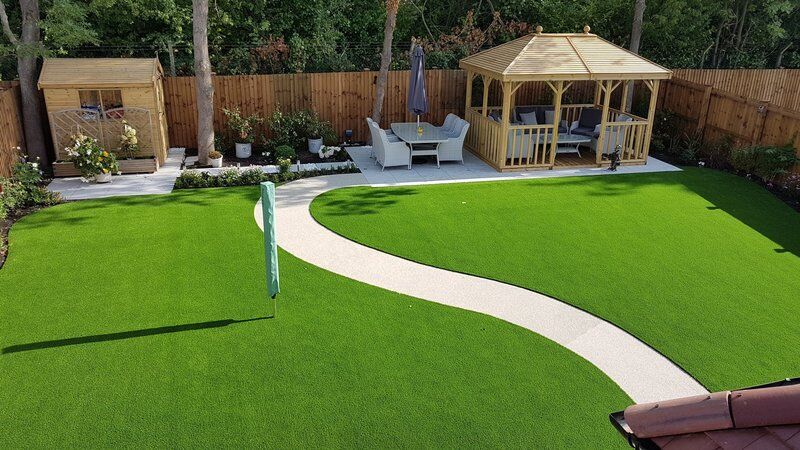Embarking on a landscaping project with artificial turf is an exciting way to enhance your outdoor or indoor space. At LawnPop®, we understand the importance of planning and precise measurements to ensure the success of your installation. Here’s a comprehensive guide on how to calculate the artificial turf you’ll need for your project, ensuring efficiency and minimizing waste.
Understanding the Basics of Turf Measurement
- Measure Your Area:
The first step in any artificial turf project is accurately measuring the space. For regular shapes (rectangles or squares), simply multiply the length by the width to get the total square footage. For irregular shapes, divide the area into manageable sections, calculate each section’s area, and then sum them up.
- Account for Waste and Cuts:
Artificial turf comes in rolls with standard widths, usually 12 to 15 feet, but lengths can be customized based on your needs. It’s important to consider the orientation and number of seams when planning your layout to minimize waste. Additionally, allow for at least 10% extra turf for cutting and fitting, especially in areas with complex shapes or multiple obstacles.
Planning for Complex Layouts
- Consider the Turf Roll Size:
Knowing the roll sizes available can help you plan the layout more efficiently. Always aim to use the largest rolls possible to reduce seams, which can help both the appearance and longevity of the turf.
- Layout Direction:
Decide the direction in which the turf will lay. All rolls should run in the same direction to ensure a uniform look. This is particularly important for aesthetic reasons but also helps in aligning the turf fibers consistently.
- Seaming and Detail Work:
Plan where the seams will fall and consider the implications of seaming for your design. Additionally, areas around curves, borders, and obstacles require detailed cuts, which should be planned in advance to ensure clean lines and secure installation.
Calculating Turf Needs
- Create a Sketch:
Drawing a sketch of the area to be turfed, including dimensions and noting where each roll will be laid, can be immensely helpful. This visual guide will assist in estimating how many rolls are needed and how they will be positioned.
- Use a Turf Calculator:
Many online tools and calculators can help estimate how much turf you need based on your area measurements and the roll size. These tools often add the necessary extra percentage for waste automatically.
- Consult with Professionals:
For complex projects, consulting with professional installers like LawnPop® can prevent costly mistakes. Our experts can provide valuable insights into optimizing your turf layout.
Installation Considerations
- Preparing the Site:
Before laying the turf, ensure the site is properly prepared. This includes removing existing grass, ensuring the ground is level, and installing a suitable base such as crushed rock or sand. Proper base preparation is crucial for drainage and the longevity of your turf.
- Installing the Turf:
Follow the planned layout closely when installing the turf. Secure the edges and seams properly to prevent lifting or shifting over time. Properly securing your turf can also significantly affect its appearance and durability.
Conclusion
Accurately calculating your artificial turf requirements is crucial for the success of your landscaping project. By taking the time to measure and plan, you can ensure that your installation is not only beautiful but also cost-effective and durable.
Ready to transform your space with the highest quality artificial turf Austin? LawnPop® is here to help. With our expertise in artificial grass and landscape solutions, we ensure every project is completed to perfection.
Read more from techbullion



































